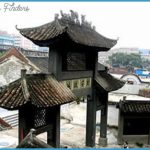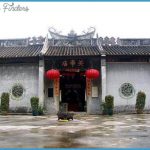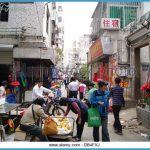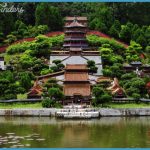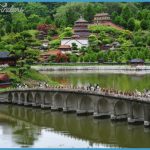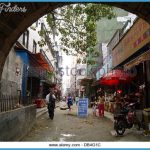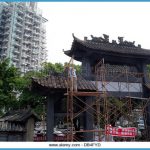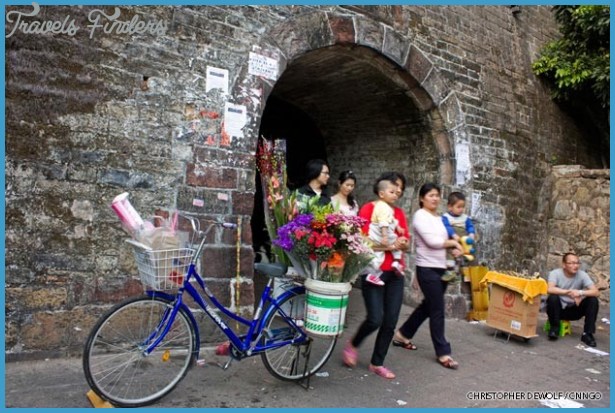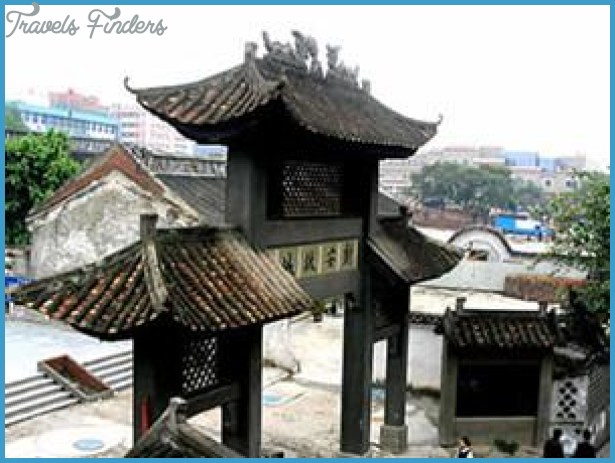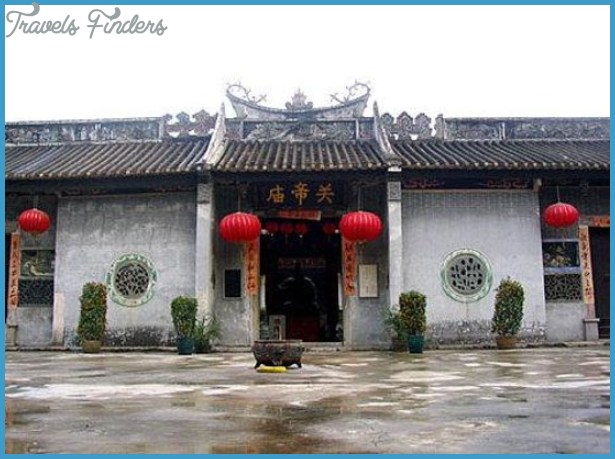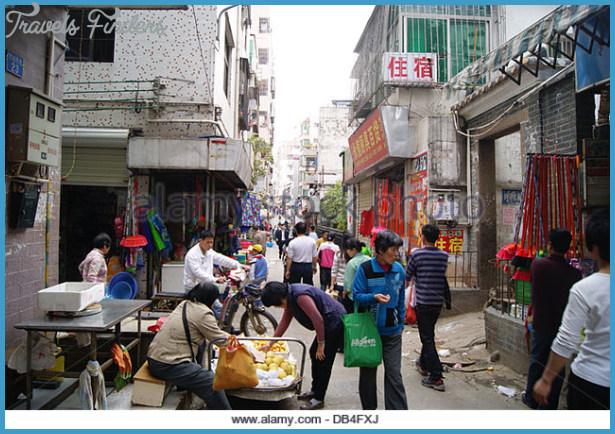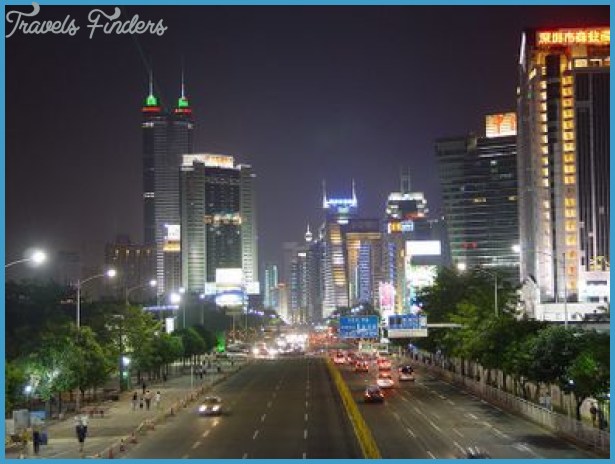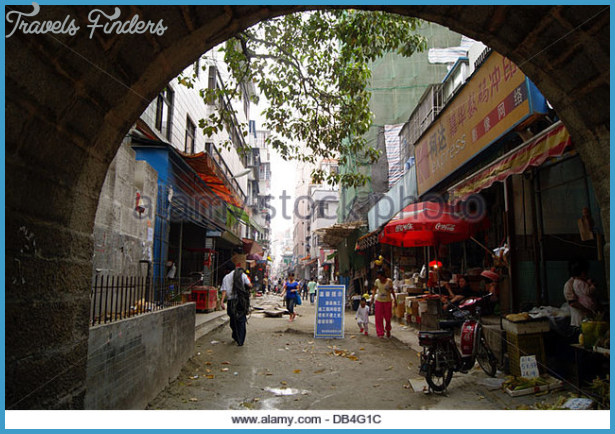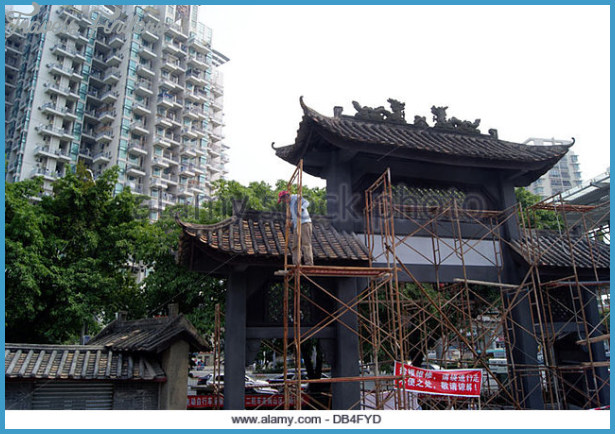We don’t go in for either ruins or Disneyland reconstructions all that much. The stones of the former don’t speak to us, nor does the plastic of the latter. And we have to say that, particularly in China, the level of political prestidigitation in historical sites sometimes gets a bit oppressive. The mental twists and turns required to get from an imperial palace to the genius of the working people seem a bit too complex for simpletons like us to come to terms with.
Which is why we found historic Nantou or Xin’an the terms are used interchangeably Fort to be such a gem.
Nantou was an administrative and military centre of the county, which encompassed Shenzhen, Hong Kong and Dongguan from the Ming Dynasty 14th 16th centuries. There’s not a lot which is especially old here the city gate, which is well preserved, seems to us to be of Ming style and there are a few very well preserved early Qing 17th 18th century buildings but otherwise just about everything has been demolished and replaced by modern three to four storey buildings.
But this is the joy of it. Cantonese street life remains little changed from the Qing dynasty. Street sellers sell baozi and dim sum from great towers of bamboo steamers at the bottom of the buildings, the streets are narrow so everything, which goes through, has to be taken by hand or hand cart.
Surprisingly the hand of the history rewriter has been stayed to an extent that strikes us as almost unique. Every now and then we come across a Qing or Ming gem, carefully restored with a straightforward historical explanation attached to the front. There is even a restored opium den, something that we have never seen in our years in China. The notice on the front carefully explains that this is something, which young people will find to be out of their normal range of experience and relates opium smoking to the National Shame caused by the defeat in the Opium War.
Next door there is a pawnshop and an old style Chinese silver shop, the forerunners of modern banks. The historical notice gives a surprisingly detailed account of the operations of silver shops including deposit taking and issuance of various forms of paper money and recounts how these institutions were replaced by banks after the Opium War. We could almost imagine ourselves, queues neatly greased, lining up at the door with a couple of taels of silver, ready to make a deposit.
Then, as we walk up the street, we come to the county seat, the naval HQ with an account of various anti-pirate anti-western campaigns and then finally, the jewel in the crown a brothel! Shades of Pompeii.
The Explanatory notice coyly refers to a Qing dynasty prohibition on the Four Evils piracy, gambling, fighting and prostitution and makes much of the use of brothels by the British during their occupation of Nantou in the Opium War. Sailor uses brothel? Now there’s a dog bites man story. But otherwise the explanation is very straightforward.
If you turn right and walk down the road twenty yards or so you will see a restored arch on your left. This is only small and marks the entrance to an alley about six feet wide. This is the traditional flower street or brothel district of the town. Here you can find the original plaque, which the coy notice on the brothel refers to. Dated the first year of Qianlong 1735 it rails against the four evils enumerated above.
After the Cultural Revolution, the town is a shadow of its former self as far as temples are concerned. But there remain two very interesting ones.
Outside the main south gate is a temple dedicated to Guan Di. The interest in this temple arises out of the date of the first temple built on this site. The first Guan Di temple on this site was built in the 40th year of the Ming Emperor Wan Li 1612. Most Daoist Gods are apotheosised heroes of Chinese history and Guan Di is no exception. As Guan Yu he was one of the heroes of the Three Kingdoms period. Every Chinese child is familiar with his exploits from the famous novel Romance of the Three Kingdoms . Typically such heroes become the subject of folk worship. Subsequently their cult receives Imperial recognition and their worship becomes official. What is uniquely Chinese is that all Daoist gods have a service or imperial rank bestowed upon them by the Emperor. In the case of Guan Di, the Southern Song Xuan Wu Emperor recognised his divine status in the early twelfth century. In the 17th century, in the 40th year of his reign, 1612, the Wanli Emperor promoted him from Wang or prince to Di or Emperor and this coincided with the building of this temple.
Guan Di, because of his martial exploits, is recognised as the Chinese Mars, the spirit who looks over war and battle. He is particularly venerated amongst the Cantonese and his picture hangs in every Hong Kong Police Station. But paradoxically he is also the patron of Triad Societies. This apparent paradox is explained by the fact that, in the novel Romance of the Three Kingdoms, Guan Yu is one of a trio of heroes who have a close fraternal relationship like the brotherly bond supposedly celebrated by the Triad Societies.
The other demi-god who is venerated in a temple in the town is Wen Tianxiang whose ancestral hall can be found on the left of the street about 30 metres past the arch over the entrance to the flower street. You can find details of Wen’s heroic deeds at the end of the Southern Song Dynasty in the section on the Tomb of the Young Emperor.
Wen is venerated in the Shenzhen area because of the astonishing number of his descendents who live in the area. He is the ancestor of the Wen clan Man in Cantonese, Mun in Hakka that is recognised as one of the great clans of the Hong Kong-Shenzhen area. Actually the official founding ancestor of the clan is Tianxiang’s younger brother Wen Bi who lived secretly in Genzhu Yuan Village in Bao’an with his clansmen after the fall of the Southern Song Dynasty, but the clan recognises Wen Tianxiang as a founder in recognition of his presence and great deeds in the area. Since the foundation of the clan there have been thirty generations and it is estimated that there are 20,000 clansmen surnamed Wen in the area. There are several Wen Tianxiang Memorial Halls or Clan Ancestral Temples in Shenzhen.



